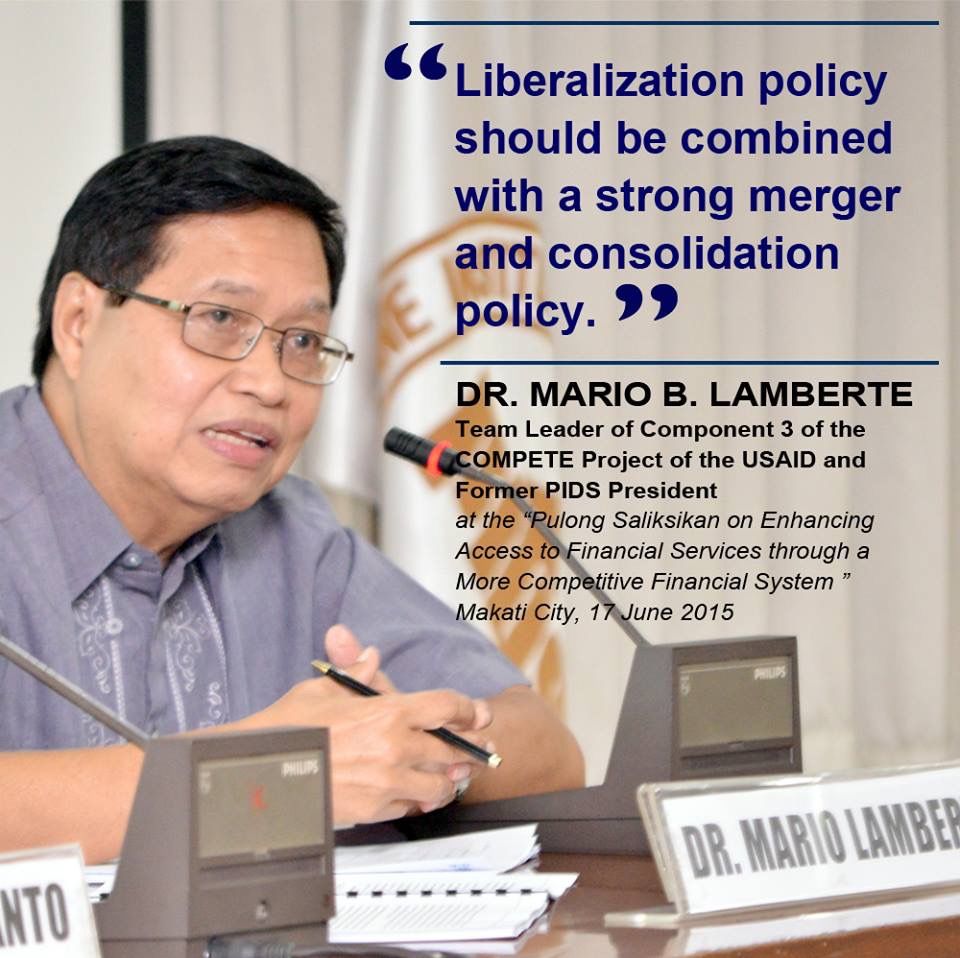Having trouble reading this email? View it in your browser. Not interested anymore? Unsubscribe Instantly. |
||||
 |
||||
| Thursday
/ 13 AUGUST 2015 |
||||
The BUB was initially intended for the poorest municipalities identified by the Cabinet’s Human Development and Poverty Reduction Cluster. In 2014, it was expanded to cover 1,233 municipalities and cities and was extended to all municipalities and cities across the country in fiscal year 2015. The BUB process provides an excellent venue for people to express their needs and, together with the local governments, identify concrete solutions to problems they face. It is a good mechanism for local participation in community development and promotes transparency in the planning and budgeting processes. But does it really work? Initial assessment of the program conducted by PIDS in 12 municipalities and cities in four provinces across the county yielded not-so-favorable results. It revealed shortcomings and weaknesses in program implementation that negatively impinged on the quality of citizen participation. In three municipalities in Quezon Province, PIDS consultants Cleofe Pastrana and Marites Lagarto observed the limited participation of civil society organizations (CSOs) during the assemblies. Local government unit (LGU) officials dominated the identification of projects, drawing doubts as to whether the real needs of the citizens were truly taken into account. In other areas like Agusan del Norte, PIDS researchers Danileen Parel, Keith Detros, and Christine Salinas observed that most of the projects prioritized during the Local Poverty Reduction Action Plan (LPRAP) workshops appear to be responsive to the needs of the citizens as identified by the CSOs and LGU officials but they do not seem to be well targeted to the poorest areas, which is a major objective of the BUB. Another weakness found is the slow implementation of the projects identified during the CSO assemblies and prioritized during the LPRAP workshops. In most of the areas where the assessment was conducted, a new BUB cycle had ensued yet the CSOs and LGUs have not witnessed the start and completion of the projects they proposed nor have been informed of the status. In another case, the project was changed without the LGU’s knowledge. Evaluation reports also indicate the minimal participation of the CSOs in project implementation and monitoring. Moreover, apprehensions have been raised by various sectors that the BUB could be exploited by the present administration to advance its own political interest. But PIDS Senior Research Fellow Rosario Manasan pointed out that the provisions of the Joint Memorandum Circular No. 4-2013, which lays down the rules for the implementation of the BUB, give national government little, if not, zero discretion in the allocation of funds across LGUs. She noted that even if the BUB budget is a lump-sum appropriation, the guidelines under the joint circular appear to be applied uniformly regardless of political affiliation of incumbent local chief executives. Manasan explained that the funding allocation across cities and municipalities is based on a formula, in which LGUs with more residents living below the poverty line get a higher BUB funding. Since BUB funding across LGUs is rule based rather than discretionary, Manasan said that it is not as vulnerable to patronage politics at both the national and local levels compared with other more discretionary funding sources for LGUs. Further evaluation of the BUB in other areas can provide more clues on what other aspects need to be fine-tuned. For the BUB to become truly inclusive and participatory, meaningful participation of basic sector organizations and CSOS, which represent the citizens, should be encouraged and supported. The DBM should also ensure that transparency is always present—in the identification and prioritization of BUB projects, and even in the implementation stage—and that the program is insulated as much as possible from patronage politics. Know what other PIDS studies have to say about the BUB in the Philippines. For other related studies, visit the SocioEconomic Research Portal for the Philippines. Simply type “bottom-up budgeting”, “local governance”, “budget reform”, “participatory budgeting”, and other relevant keywords in the Search box.
|
27 AUGUST 2015 16 JULY 2015 . . . . . . . . . . . . . . . . . . . . . . . . . .
ASIA-PACIFIC RESEARCH AND TRAINING NETWORK ON TRADE
The Asia-Pacific Research and Training Network on Trade (ARTNeT) is an open regional network composed of leading trade research institutions and think tanks across the Asia-Pacific region. It was established by the United Nations Economic and Social Commission for Asia and the Pacific UNESCAP in 2004 with the support of the International Development Research Centre (IDRC), Canada. Since 2005, the Philippine Institute for Development Studies has been an active member of this network. . . . . . . . . . . . . . . . . . . . . . . . . . . Call for Papers: Philippine Journal of Development
The Philippine Institute for Development Studies (PIDS) is inviting submissions to the Philippine Journal of Development (PJD). The PJD is a peer‐reviewed journal published twice a year by PIDS. Now on its 40th year, PJD considers original, unpublished papers on economic development, political economy, public administration, foreign relations, and other fields/topics, which are policy oriented and may or may not explicitly have a bearing on the Philippines. Book reviews are also accepted. The theme or topic of the book should fall within the scope of the articles accepted for publication. The target readers of PJD include researchers, educators, policymakers, and development planners. Click here for the guidelines in the preparation of articles. Inquiries and submissions should be forwarded to the Managing Editor at ssiar@mail.pids.gov.ph. |
|||
POLICY NOTES
ECONOMIC ISSUE OF THE DAY
DISCUSSION PAPERS
|
||||
|
||||
A paper released by state think tank Philippine Institute for Development Studies (PIDS) was delivered this week at the second ministerial meeting of theAsia-Pacific Economic Cooperation (APEC). Written by Dr. George Manzano and Ms. Shanti Aubren Prado, PIDS consultants, "Evaluation of the APEC Environmental Goods Initiative: A Dominant Supplier Approach" assesses the list of 54 environmental goods and services that the APEC promised in 2012 to liberalize by the end of this year. It presents evidence to guide APEC countries in implementing its initiative by identifying specific goods from the list that can be considered for sectoral liberalization, ranked by the measure of their supply predominance and comparative advantage in the APEC. READ MORE |
||||
The Philippines' financial sector has a lot of catching to do to improve its competitiveness and be at par with the frontrunners of the Association of Southeast Asian Nations (ASEAN). Improved financial education and financial literacy, and reform policies to strengthen financial inclusion of small and medium enterprises (SMEs) should be at the heart of policy reforms to achieve the critical improvements necessary to gear up for the ASEAN Economic Community. These were expressed by former PIDS president, Dr. Mario B. Lamberte, and his research associate, Ms. Ammielou Q. Gaduena, in their report on the country’s financial system titled "Enhancing Access to Financial Services through a More Competitive Financial System", a component study of the Advancing Philippine Competitiveness (COMPETE) project funded by the United States Agency for International Development. The authors presented the study in a PIDS Pulong Saliksikan held on June 17 in Makati City. READ MORE |
||||
|
||||
FOREIGN DEBT
Source: Bangko Sentral ng Pilipinas VIEW TABLE for the time-series data on total external debt. |
||||
GROSS INTERNATIONAL RESERVES
Source: Bangko Sentral ng Pilipinas VIEW TABLE for time-series data on gross international reserves. |
||||
EXCHANGE RATE
Source: Bangko Sentral ng Pilipinas VIEW TABLE for time-series data on monthly average peso-dollar exchange rate. |
||||
Need Help? Have Feedback? Feel free to Contact Us. © 2015 Philippine Institute for Development Studies.
|
||||









